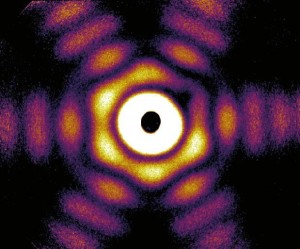While having intelligent clothing is not an immediate prospect, it is definitely on the horizon according to Massachusetts Institute of Technology researcher Marcelo Coelho. Speaking at an EmTech Conference Brazil (a series of conferences held by MIT Technical Review in various parts of the world). A Nov. 19, 2015 article by Sebastian Smith published on phys.org discusses intelligent clothing,
One of the most promising areas is clothing that integrates computers and can practically think for itself.
“You can program your shirt for it to change color, or move to a different pattern,” he said. “Maybe you’re at work today and want your shirt one way, but you’ll be at a party tonight and want it different.”
Another creation is a dress with a hemline that rises and falls—or another dress, decorated with gently opening and closing flowers.
“Transforming dresses” is an idea that was profiled in an Oct. 20, 2006 article by Rachel Ross for MIT Technical review (Note: A link has been removed),
Turkish fashion designer Hussein Chalayan is known for his innovative ideas. Earlier this month [October 2006], he wowed the audience at his Paris runway show with five dresses that automatically transformed in shape and style. Zippers closed, cloth gathered, and hemlines rose–all without human assistance. Beneath each model’s skirt was a computer system designed by the London-based engineering and concept-creation firm 2D3D. Rob Edkins, director of 2D3D, talked to Technology Review about how the computers controlled the clothing with motors and wires.
Technology Review: What was your vision for the clothes in the latest Chalayan show?
Rob Edkins: He gave us a series of drawings: five dresses which morphed through three decades. Together with him we developed a means by which we could move the dresses into the various shapes of those three decades. It took a lot of R&D before we arrived at a solution.
With the first dress, the girl walked on in a 1906 costume, and it morphed from 1906 to 1916 and then to 1926. So she ended up having a beaded flapper dress of the twenties. The next dress was from 1926, and it evolved from 1936 to 1946, and so on. The final dress was 1986, 1996, and then 2007. So there were five dresses, and each dress [morphed through] three decades.
A lot of [the transformation] was unbelievably subtle. While you were watching something happen down around her waist, something else was happening on her shoulder. A little fabric might roll up and become a sort of half sleeve.
…
Another scientist (pulling the discussion in a somewhat different direction) was profiled in Smith’s article,
… [In answer to the question, where is this all going?] another MIT scientist, Skylar Tibbits, [says the answer] is self-assembly.
No, not self-assembly as in struggling with instructions and wrenches over a bed you just bought in a box. Tibbits means self-assembly as in the thing—the bed, or whatever it may be—assembling itself.
This is the idea of 4D printing, Tibbits’ specialty.
If 3D printers can produce three-dimensional objects at the touch of a button, 4D means they then go on to transform or organize themselves in useful ways.
Unlike robots these materials are not computerized and do not need power like electricity. They react to ordinary forces like pressure or heat or water and change, but are engineered by the scientists so that they change shape in a pre-determined way.
Neither scientist was presenting new ideas for anyone who’s been following recent developments in emerging technologies but for an audience of people who haven’t this is likely exciting and, perhaps, a bit disturbing. (Well, that was my response when first encountering these developments.) As for clothing that’s more intelligent than its wearer (or out of control), it doesn’t seem to have been mentioned in the presentations but perhaps the possibilities should be considered.
